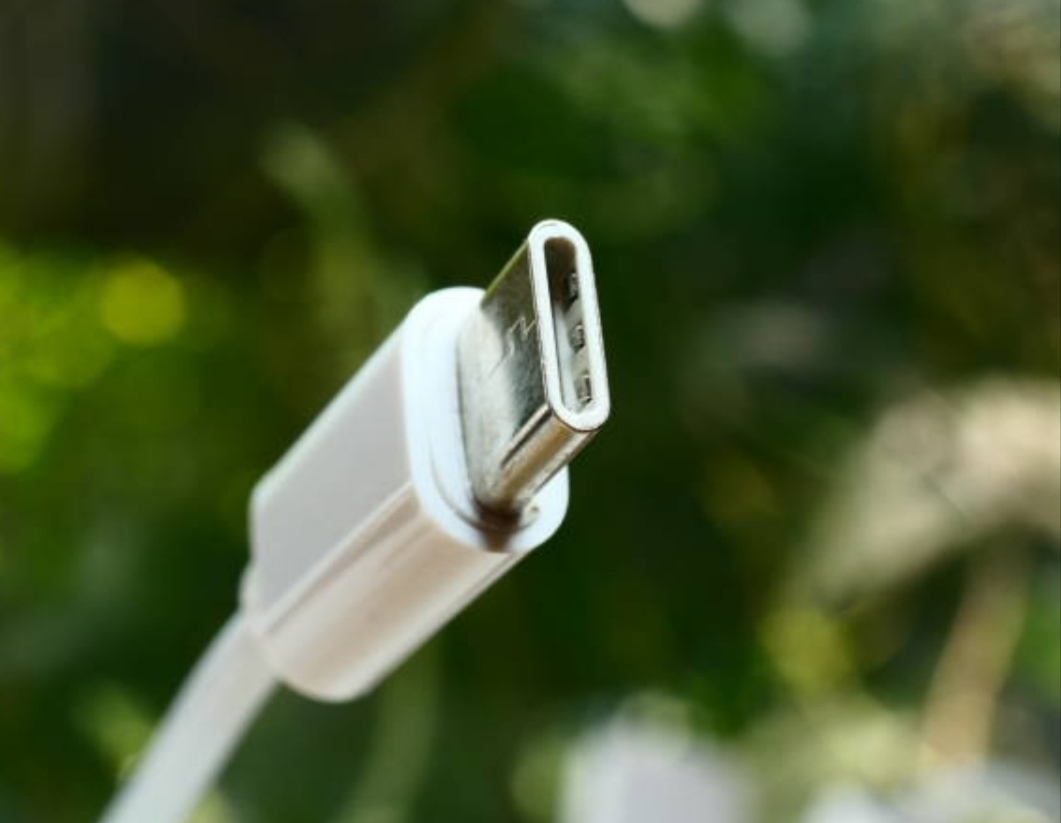Introduction to USB-C
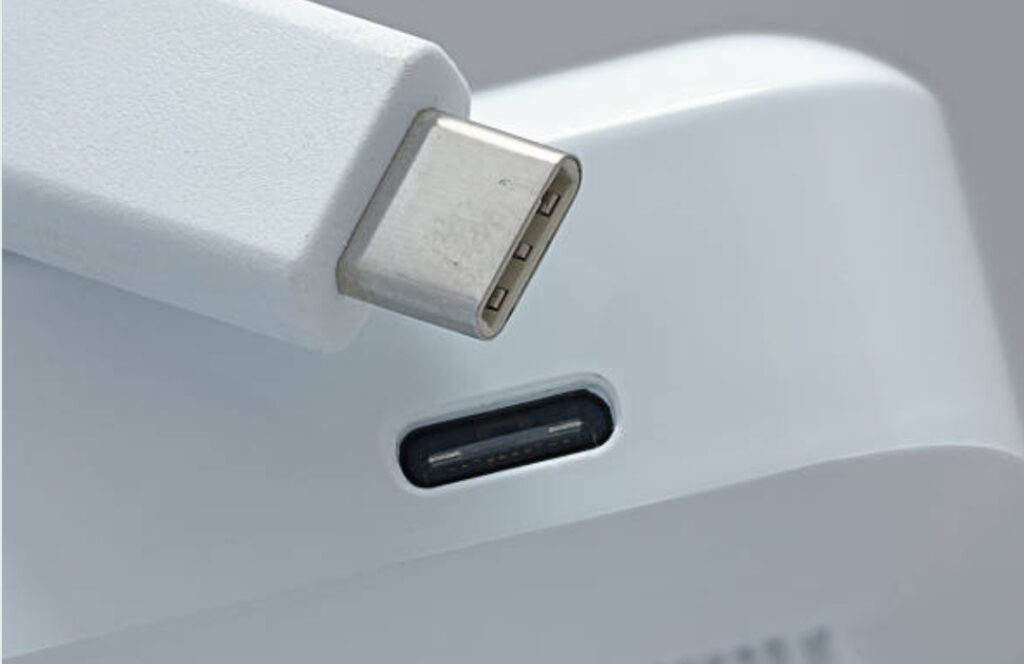
Definition and Origin of USB-C
What is USB-C? Simply put, USB-C (also known as USB Type-C) is a universal connector standard designed to transmit both data and power using a single, compact port.
Unlike previous USB connectors, USB-C features a reversible design, meaning there’s no wrong way to plug it in.
This innovation eliminates the frustrating trial-and-error approach common with older USB-A and USB-B ports.
The USB Implementers Forum (USB-IF), an industry consortium responsible for developing USB standards, first introduced USB Type-C in 2014.
Since then, this powerful, multifunctional connector has been rapidly adopted by smartphones, laptops, tablets, gaming consoles, and even home appliances.
The key reason USB-C has gained worldwide recognition is its ability to replace multiple types of connectors with just one universal standard. It can handle:
✅ High-speed data transfer (up to 40 Gbps with USB4)
✅ Fast charging (Power Delivery up to 240W)
✅ Video output (supports DisplayPort, HDMI, and Thunderbolt)
Because of these capabilities, USB-C has become the standard for modern devices, eliminating the need for proprietary charging cables and paving the way for a truly universal connectivity solution.
Evolution from Previous USB Standards
Before USB-C became the future of connectivity, various older USB standards were used to connect and charge devices.
Let’s take a look at how USB technology evolved over the years and why USB-C is now the preferred standard.
USB-A – The Original USB Standard
🔹 Introduced in 1996, USB-A (Universal Serial Bus Type-A) became the most common port for keyboards, mice, flash drives, and external hard drives.
🔹 Limitations: USB-A only supported one-way connections, meaning the device had to be plugged in a specific way. If you tried inserting it upside down, it wouldn’t fit.
🔹 It also had limited charging speeds and data transfer rates, with USB 2.0 maxing out at 480 Mbps and USB 3.0 reaching up to 5 Gbps.
USB-B – The Square Connector for Printers & Peripherals
🔹 Designed for larger peripherals, USB-B was commonly found in printers, scanners, and external storage devices.
🔹 It came in multiple shapes and sizes, such as Mini-USB and Micro-USB, which caused inconsistencies and compatibility issues.
🔹 Micro-USB was the standard for older smartphones, but its fragile design and slow charging speeds made it obsolete when USB-C arrived.
Why USB-C is Superior to Previous USB Standards
USB-C solves all the problems associated with USB-A and USB-B by introducing a single, compact, and powerful connector that is:
✅ Reversible: No more struggling to insert cables the right way.
✅ Universal: Works across smartphones, tablets, laptops, monitors, and even gaming consoles.
✅ Faster: Supports data transfer speeds up to 40 Gbps (USB4 and Thunderbolt 4).
✅ More powerful: Delivers up to 240W of power with USB Power Delivery (USB PD), allowing it to charge even high-end gaming laptops.
✅ Supports video output: USB-C can replace HDMI and DisplayPort, making it ideal for external monitors.
Why USB-C is the Future of Connectivity
With governments and tech companies embracing USB-C as the global standard, it’s clear that this versatile and future-proof connector will continue to dominate the industry.
Apple, Samsung, Dell, HP, and Google have all transitioned their flagship devices to USB-C, and the European Union has even passed laws requiring USB-C as the universal charging standard for smartphones by 2024.
If you’re still using outdated cables, now is the time to upgrade to USB-C. With faster charging, higher data speeds, and universal compatibility, USB-C is truly the connector of the future.
Technical Specifications of USB-C
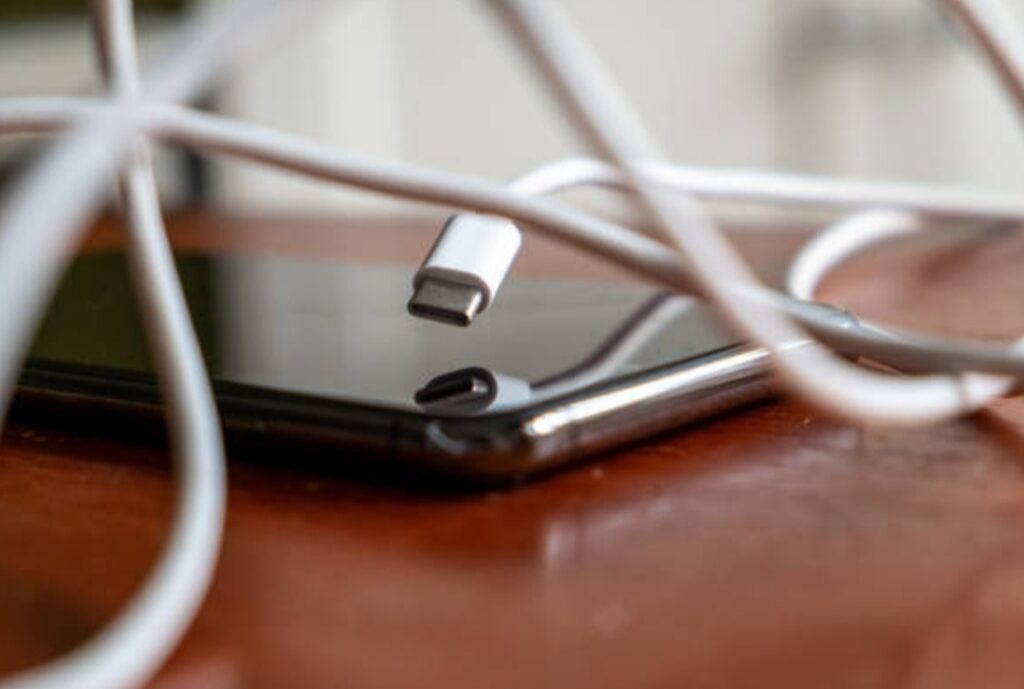
Reversible Design
One of the most revolutionary features of USB-C is its reversible connector design.
Unlike older USB-A and USB-B ports, which require precise alignment when plugging in, USB-C is completely symmetrical.
This means that you can insert the connector either way, eliminating the frustration of flipping the cable multiple times to find the correct orientation.
This intelligent, user-friendly design is particularly beneficial in low-light environments or situations where quick and easy connection is necessary.
Whether you’re charging your smartphone, transferring data, or connecting to an external display, USB-C ensures a hassle-free, plug-and-play experience.
In addition to convenience, USB-C’s reversible design enhances durability.
Older USB connectors often experienced wear and tear due to repeated incorrect insertions. USB-C eliminates this issue, leading to longer-lasting ports and cables.
With USB-C becoming the universal standard, tech companies like Apple, Dell, Lenovo, and Samsung have fully embraced its sleek and practical design.
In fact, the European Union has mandated USB-C as the common charging standard for all smartphones and portable devices starting in 2024.
This move ensures widespread adoption and a seamless user experience across all devices.
Data Transfer Speeds
When it comes to data transfer speeds, USB-C outperforms all previous USB standards, making it the go-to connector for high-speed data transfers.
Depending on the USB version it supports, USB-C can achieve transfer speeds ranging from 5 Gbps to 40 Gbps:
- USB 3.1 Gen 1 – Up to 5 Gbps (10x faster than USB 2.0)
- USB 3.1 Gen 2 – Up to 10 Gbps
- USB 3.2 – Up to 20 Gbps
- USB4 – Up to 40 Gbps (matching Thunderbolt 3 speeds)
With USB4, USB-C now supports the fastest data speeds available, enabling:
✅ Lightning-fast file transfers – Move large files like 4K videos and high-resolution images in seconds.
✅ Seamless cloud backups – Speed up data synchronization for businesses and professionals.
✅ Enhanced gaming performance – Reduce latency and boost gaming peripherals’ efficiency.
✅ Efficient external storage – Use USB-C external SSDs for quick and secure data access.
Whether you’re a content creator, professional photographer, or gamer, USB-C ensures blazing-fast performance without bottlenecks.
Power Delivery Capabilities
One of the biggest advantages of USB-C over older USB standards is its ability to deliver significantly more power.
Thanks to USB Power Delivery (USB PD), USB-C supports power outputs up to 100W (20V/5A), allowing it to charge:
- Smartphones (faster than standard chargers)
- Tablets and iPads
- Ultrabooks and Laptops (including MacBook Pro, Dell XPS, and Lenovo ThinkPad)
- Gaming consoles (like the Nintendo Switch)
- Monitors and docking stations
With the introduction of USB PD 3.1, USB-C now supports up to 240W of power, making it powerful enough to charge even high-performance gaming laptops and workstations.
This high-power capability means fewer chargers and cables, reducing clutter and making travel more convenient.
Many manufacturers are now switching to USB-C for all their devices, further reinforcing its universal appeal.
Another key advantage of USB-C’s power delivery is its intelligent power management.
Devices can negotiate the required power levels dynamically, ensuring safe and efficient charging without overloading or damaging the battery.
If you’re looking for fast and efficient charging, USB-C Power Delivery is the best option available today.
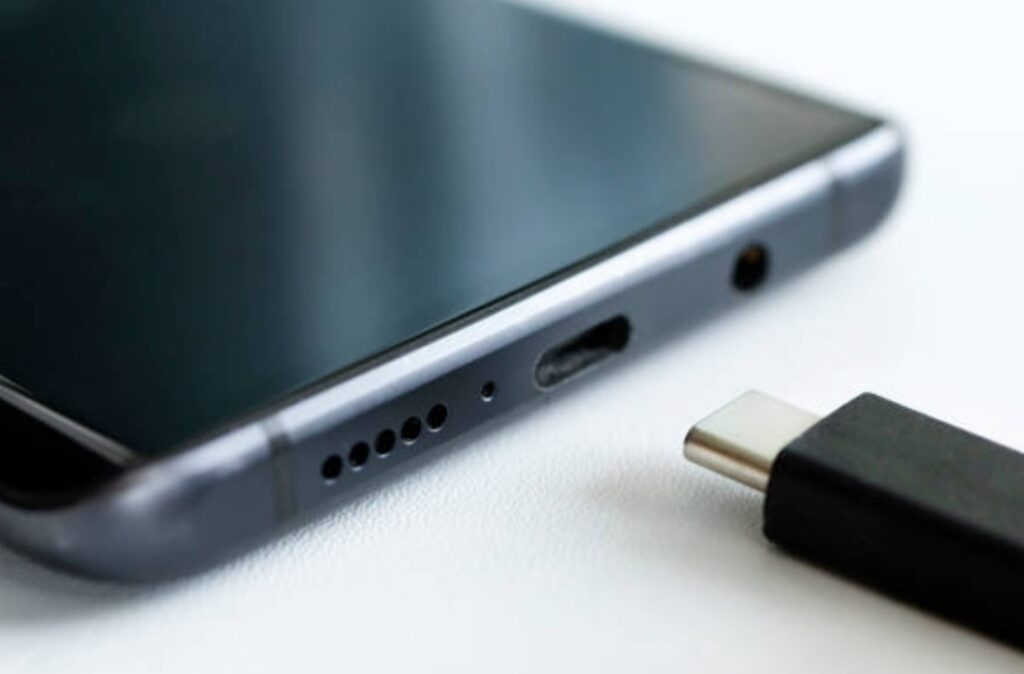
Alternate Modes (Video Output)
One of the lesser-known but powerful features of USB-C is its ability to support video output, replacing the need for separate HDMI or DisplayPort cables.
With Alternate Mode (Alt Mode), USB-C can transmit video and audio signals, making it an ideal choice for connecting to external displays, projectors, and docking stations.
Here are the different video output options USB-C supports:
- DisplayPort Alt Mode – Supports 4K and even 8K resolution video output.
- HDMI Alt Mode – Allows direct connection to HDMI-enabled monitors and TVs.
- Thunderbolt 3 & 4 – Supports dual 4K displays or a single 8K display at 60Hz.
- VGA and DVI (via adapters) – Provides compatibility with older display technologies.
Why is USB-C’s video output important?
✅ Single-cable solution – Connect monitors, projectors, and docking stations without additional adapters.
✅ Supports high refresh rates – Ideal for gamers and video editors who require smooth visuals.
✅ Universal compatibility – Works with MacBooks, Windows laptops, tablets, and even smartphones.
✅ Improves workplace productivity – Enables dual-monitor setups for multitasking and presentations.
With the increasing adoption of USB-C monitors and accessories, users can now enjoy a simpler, all-in-one solution for connectivity and display output.
Why USB-C is the Ultimate Connector
With its reversible design, high-speed data transfer, power delivery capabilities, and video output support, USB-C has become the future of connectivity.
If you’re still using older USB-A or Micro-USB devices, it’s time to upgrade to USB-C for a more efficient, faster, and future-proof experience.
Don’t get left behind! Make the switch to USB-C today and experience the next generation of connectivity. 🚀
Advantages of USB-C Over Previous Connectors
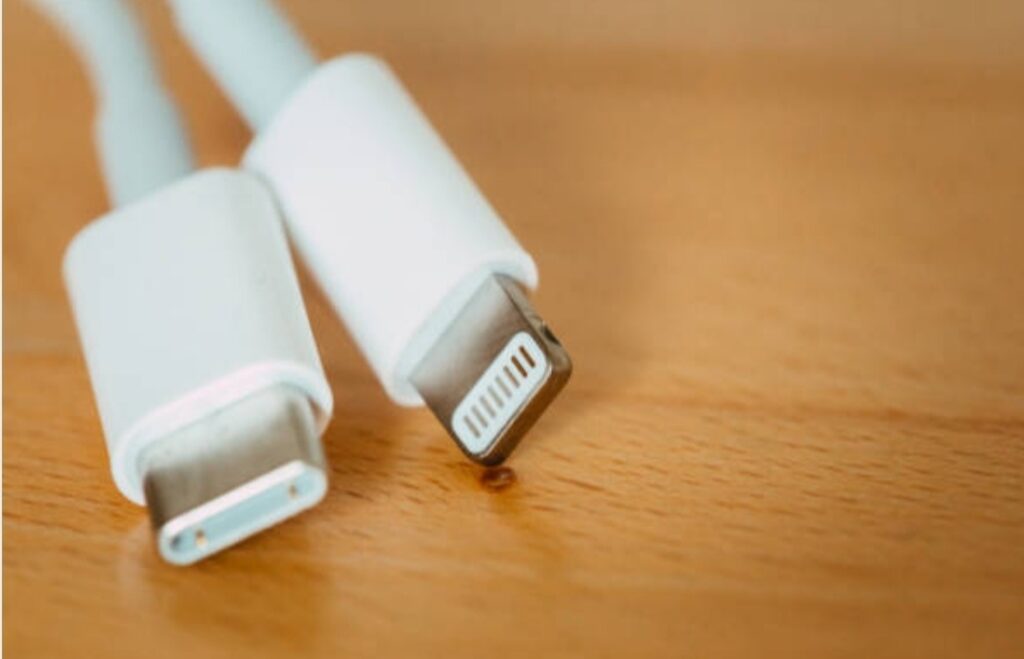
Universal Compatibility
One of the biggest advantages of USB-C is its universal compatibility across a wide range of devices and brands.
In the past, different devices required different charging and data transfer ports.
Smartphones used Micro-USB, laptops relied on USB-A, and Apple had its proprietary Lightning port.
This inconsistency created frustration, forcing users to carry multiple cables and adapters.
With USB-C, all of that has changed. Today, a single USB-C cable can be used to:
✅ Charge smartphones, tablets, and laptops (including MacBooks, Dell XPS, Lenovo ThinkPad, and more).
✅ Connect external hard drives, SSDs, and flash drives.
✅ Transfer data between devices at high speeds.
✅ Power gaming consoles like the Nintendo Switch.
✅ Connect to monitors, projectors, and docking stations.
Because USB-C is an industry standard, nearly all modern devices support it. In fact, the European Union has passed a law mandating USB-C as the universal charging port for all smartphones, tablets, and portable devices starting in 2024.
This shift towards standardization eliminates cable clutter, making it easier for consumers to travel with fewer accessories and simplify their tech setup.
With USB-C becoming the global standard, there’s no need to worry about compatibility issues between different brands and ecosystems.
Whether you use Windows, macOS, Android, or even Linux, USB-C works seamlessly across all platforms.
If you’re tired of carrying multiple chargers and adapters, it’s time to switch to USB-C and experience true universal compatibility.
Enhanced Durability
Durability is another key improvement of USB-C over previous USB connectors.
Older connectors like Micro-USB and USB-A were prone to bending, breaking, or becoming loose over time.
These ports also had metal contacts that wore out easily, making them unreliable for long-term use.
In contrast, USB-C is built to last. Here’s why:
- Reversible Connector – Because USB-C is symmetrical, there’s no risk of damaging the port by inserting the cable incorrectly.
- Stronger Build Quality – USB-C connectors use reinforced materials, reducing wear and tear even with frequent plugging and unplugging.
- Higher Insertion Cycles – While older USB ports typically lasted around 1,500 insertions, USB-C is rated for at least 10,000 plug cycles, making it far more durable.
- Tightly Fitting Connection – USB-C cables snap into place securely, preventing loose or unstable connections.
This superior durability is especially beneficial for high-use devices like smartphones, laptops, and gaming consoles, where frequent plugging and unplugging is common.
By switching to USB-C, users can avoid the frustration of broken ports and unreliable connections, ensuring a long-lasting and hassle-free experience.

Simplified Connectivity
Another major advantage of USB-C is that it combines power, data, and video transmission into a single port, simplifying both device design and user experience.
In the past, laptops and desktops had separate ports for charging, data transfer, and video output:
- USB-A for peripherals (mice, keyboards, flash drives)
- HDMI or DisplayPort for external monitors
- Proprietary charging ports for power
This meant users needed multiple cables and adapters just to connect all their devices.
With USB-C, everything is streamlined into a single port. One USB-C cable can do it all:
✅ Charge your laptop or smartphone with up to 100W of power.
✅ Transfer data at speeds up to 40 Gbps with USB4 or Thunderbolt 4.
✅ Output video to a 4K or 8K monitor using DisplayPort or HDMI Alt Mode.
✅ Connect external accessories like hard drives, docking stations, and eGPUs.
For tech manufacturers, USB-C’s all-in-one functionality allows them to create thinner, lighter, and more efficient devices without needing multiple bulky ports.
For consumers, USB-C means fewer cables, fewer adapters, and a much simpler experience.
Whether you’re a student, professional, gamer, or content creator, USB-C makes connectivity easier than ever before.
Why USB-C is the Ultimate Upgrade
With its universal compatibility, enhanced durability, and simplified connectivity, USB-C is the future of technology.
If you’re still using outdated USB-A, Micro-USB, or proprietary charging cables, now is the time to upgrade.
✔ Ditch the clutter and embrace a single, universal connector.
✔ Experience faster charging, higher data speeds, and seamless video output.
✔ Invest in the future—USB-C is here to stay.
👉 Make the switch to USB-C today and enjoy a smarter, more efficient tech experience!
USB-C in Modern Devices
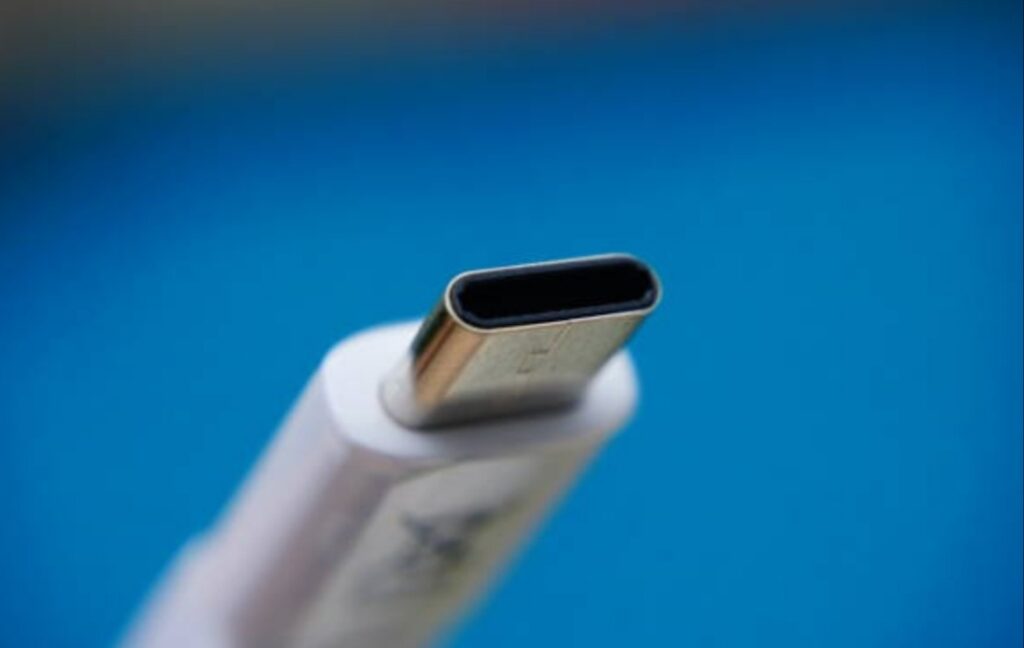
Smartphones and Tablets
The adoption of USB-C in smartphones and tablets has revolutionized the way we charge, transfer data, and connect accessories.
Gone are the days when Android devices relied on Micro-USB while Apple users were limited to Lightning ports.
Today, most major smartphone and tablet manufacturers have transitioned to USB-C, offering users faster charging, higher data speeds, and universal compatibility.
Why Are Smartphone Manufacturers Switching to USB-C?
✅ Faster Charging: USB-C supports Power Delivery (PD), allowing devices to charge up to 70% faster than previous standards.
✅ High-Speed Data Transfer: With USB 3.1 and USB4, users can transfer photos, videos, and files at blazing-fast speeds.
✅ Universal Port: One USB-C cable can charge multiple devices, reducing clutter and eliminating the need for multiple chargers.
✅ Reversible Connector: No more frustration with plugging in the cable the wrong way. USB-C is symmetrical, making it easy to connect in any orientation.
Which Smartphone Brands Use USB-C?
Most leading smartphone brands have fully adopted USB-C, including:
- Samsung (Galaxy S series, Galaxy Z Fold, Galaxy A series)
- Google (Pixel 8, Pixel 7, Pixel 6, and earlier models)
- OnePlus (OnePlus 12, OnePlus 11, Nord series)
- Xiaomi (Redmi, Mi, and Poco series)
- Sony (Xperia smartphones)
- Huawei (Mate and P series)
Even Apple has embraced USB-C with the iPhone 15 series, marking a major shift towards a universal charging standard.
Tablets and USB-C: A Game Changer
USB-C has also become the standard charging and data port for tablets, replacing outdated connectors.
Popular tablets with USB-C ports include:
- Apple iPad Pro, iPad Air, and iPad 10th Gen
- Samsung Galaxy Tab S9, S8, and A series
- Microsoft Surface Pro and Surface Go
- Lenovo Tab and Yoga Tablets
- Amazon Fire HD 10 and HD 8
With USB-C, users can connect their tablets to external monitors, keyboards, and even docking stations, transforming them into powerful productivity machines.
If you’re still using an older device with Micro-USB or Lightning, now is the time to upgrade to a USB-C-powered smartphone or tablet. It’s faster, more efficient, and future-proof.
Laptops and Desktops
USB-C has completely transformed the laptop and desktop industry, offering faster charging, seamless data transfer, and advanced connectivity options.
In the past, laptops had separate ports for charging, USB-A for data, and HDMI for video output. Now, USB-C has combined all these functions into a single, powerful port.
Why Do Laptops Use USB-C?
✅ Universal Charging: Most modern laptops support USB-C Power Delivery (PD), allowing users to charge their devices with a single USB-C charger instead of bulky proprietary adapters.
✅ High-Speed Data Transfer: With USB4 and Thunderbolt 4, USB-C ports can transfer data at speeds of up to 40 Gbps, ideal for professionals working with large files, video editing, and gaming.
✅ Multi-Functionality: A single USB-C port can power monitors, external hard drives, and accessories, making it the ultimate connectivity solution.
✅ Docking Station Compatibility: USB-C docks allow users to connect multiple devices, external monitors, and accessories with just one cable.
Laptops That Use USB-C for Charging and Connectivity
Many leading laptop manufacturers have fully embraced USB-C, including:
- Apple (MacBook Air, MacBook Pro)
- Dell (XPS, Inspiron, Latitude)
- HP (Spectre, Envy, EliteBook, Pavilion)
- Lenovo (ThinkPad, Yoga, Legion)
- ASUS (ZenBook, ROG, VivoBook)
- Microsoft (Surface Laptop, Surface Pro)
Even desktop PCs and gaming laptops now include USB-C ports, allowing users to connect high-speed SSDs, external GPUs, and high-resolution monitors.
If you’re in the market for a new laptop or desktop, make sure it comes with USB-C support. It will provide better compatibility, faster performance, and a more seamless experience.

Peripheral Devices
USB-C has not only become standard for smartphones and laptops but has also revolutionized peripheral devices, offering better speed, power, and efficiency.
What Are USB-C Peripheral Devices?
USB-C is now the go-to connection for a wide range of accessories, including:
✅ External Hard Drives & SSDs – Faster data transfer speeds for backups, gaming, and content creation.
✅ Monitors & Display Adapters – Supports 4K and 8K video output via DisplayPort and HDMI Alt Mode.
✅ Docking Stations & Hubs – Allows users to connect multiple devices, including USB-A peripherals, Ethernet, and SD cards, through a single USB-C port.
✅ Mice & Keyboards – Many high-end gaming and productivity peripherals now use USB-C for charging and connectivity.
✅ External GPUs (eGPUs) – Connect powerful external graphics cards to boost gaming and creative performance on USB-C-enabled laptops.
✅ Printers & Scanners – Many modern office devices now support USB-C for faster data communication and power delivery.
Why USB-C is Perfect for Peripherals
✅ Faster Data Transfer: USB-C supports speeds up to 40 Gbps, making it ideal for large file transfers and high-performance devices.
✅ Simplified Connectivity: No need for multiple cables or adapters—one USB-C port handles power, data, and video.
✅ More Power for Devices: USB-C can deliver up to 100W, allowing it to power larger devices like monitors and external GPUs.
✅ Future-Proof Technology: As more manufacturers adopt USB-C, older USB-A and proprietary ports are becoming obsolete.
If you’re looking to upgrade your external storage, gaming setup, or workstation, choosing USB-C peripherals ensures better speed, efficiency, and long-term compatibility.
USB-C is the Future of Modern Devices
The widespread adoption of USB-C across smartphones, laptops, and peripherals proves that it’s the most versatile and powerful port ever created.
If you’re still using outdated ports like Micro-USB, USB-A, or proprietary connectors, it’s time to embrace the future.
✔ Upgrade your devices to USB-C for faster charging, better data transfer, and universal compatibility.
✔ Ditch the clutter of multiple cables and enjoy a streamlined experience.
✔ Invest in USB-C peripherals to future-proof your tech setup.
👉 The world is switching to USB-C—don’t get left behind!
The Future of USB-C
The USB-C standard has already revolutionized smartphones, laptops, and peripheral devices, but its full potential is yet to be realized.
As industries continue to adopt USB-C, and governments push for universal charging standards, it is becoming the global connectivity solution of the future.
Despite its rapid growth, USB-C still faces challenges, including cable quality issues, compatibility concerns, and consumer awareness.
Let’s explore the industry adoption trends, regulatory mandates, and potential challenges that will shape the future of USB-C.

Industry Adoption Trends
USB-C is quickly becoming the default standard across various industries, from consumer electronics to automotive and industrial applications.
This widespread adoption is driven by its versatility, high-speed data transfer, and universal charging capabilities.
1. USB-C in Consumer Electronics
USB-C has already replaced older ports like Micro-USB, Lightning, and USB-A in many consumer devices.
📌 Smartphones & Tablets: Major brands like Apple, Samsung, Google, and OnePlus have adopted USB-C for charging and data transfer, making it the universal standard for mobile devices.
📌 Laptops & Desktops: Most modern MacBooks, Windows laptops, and even Chromebooks now feature USB-C for charging, display output, and connectivity.
📌 Gaming Consoles: Devices like the Nintendo Switch and Steam Deck use USB-C for charging and accessories.
📌 Wearables & Accessories: Smartwatches, fitness bands, and wireless headphones are increasingly using USB-C for faster charging and better compatibility.
2. USB-C in the Automotive Industry
The automotive sector is integrating USB-C into modern vehicles to provide faster charging and data transfer for passengers.
🚗 Car manufacturers such as Tesla, BMW, Audi, and Mercedes-Benz now include USB-C ports instead of older USB-A ports.
🚗 USB-C allows for higher power delivery, ensuring that smartphones and tablets charge quickly while on the go.
🚗 Some next-gen infotainment systems even use USB-C for direct smartphone integration, improving Apple CarPlay and Android Auto experiences.
3. USB-C in Industrial & Medical Devices
Beyond consumer gadgets, USB-C is being adopted in industrial machinery, medical equipment, and IoT devices.
⚙️ Industrial Equipment: USB-C allows for faster machine-to-machine communication, reducing downtime in factories and automation systems.
⚕️ Medical Technology: Many modern medical devices now use USB-C for power and data transmission, enabling high-speed imaging and real-time monitoring.
As more industries transition to USB-C, its role as the global standard for connectivity and charging becomes even more evident.
Regulatory Mandates
Governments worldwide are recognizing the benefits of USB-C and are enforcing regulations to standardize charging ports.
These laws aim to reduce electronic waste, improve consumer convenience, and encourage innovation in charging technology.
1. The European Union’s USB-C Mandate
The European Union (EU) has passed legislation requiring all smartphones, tablets, cameras, and other portable devices to use USB-C as a universal charging port by 2024.
📜 Key points of the EU mandate:
✔ All new smartphones (including iPhones) must adopt USB-C to ensure universal compatibility.
✔ Laptops must comply by 2026, further pushing the USB-C transition in the computing industry.
✔ This law aims to eliminate the need for multiple chargers, reducing e-waste and consumer costs.
This legislation has already forced Apple to switch to USB-C with the iPhone 15, signaling a major industry shift.
2. Global Influence: Other Countries Following the EU’s Lead
The EU mandate has set a precedent, influencing other nations to consider similar regulations.
🌍 India: The Indian government has proposed a USB-C charging standard for all mobile devices to reduce electronic waste.
🌍 United States: Lawmakers have begun discussing standardizing charging ports, citing consumer benefits and environmental impact.
🌍 China: As the world’s largest electronics manufacturer, China is pushing for USB-C adoption in both domestic and export products.
The global push for USB-C as a universal standard is accelerating its adoption worldwide, making it the future of device connectivity.
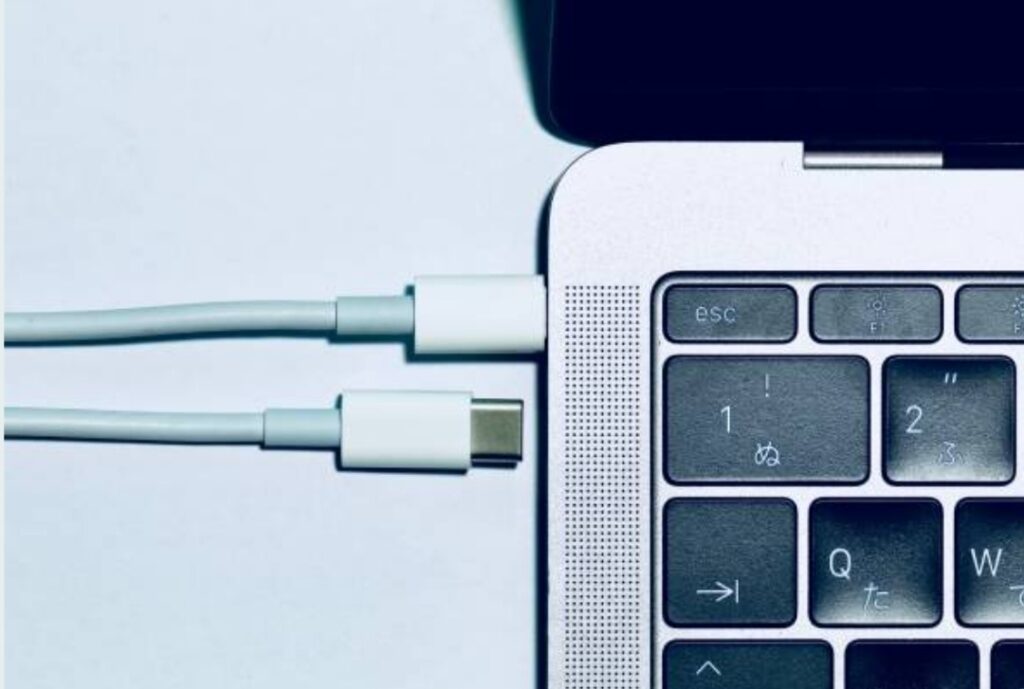
Potential Challenges
Despite its growing popularity, USB-C still faces challenges that need to be addressed before it can become the ultimate universal standard.
1. Varying Cable Quality & Consumer Confusion
One of the biggest challenges with USB-C is inconsistent cable quality.
🚫 Not all USB-C cables are the same—some only support charging, while others allow high-speed data transfer and video output.
🚫 Cheap, poorly-made cables can cause slow charging, overheating, or even device damage.
🚫 Consumers often struggle to identify the difference between USB 2.0, USB 3.1, USB4, and Thunderbolt cables.
🔍 Solution:
💡 Clear labeling and certification programs (like USB-IF and Thunderbolt certification) are crucial to help consumers identify quality cables.
2. Compatibility Issues Between USB-C Devices
Even though USB-C is a universal port, not all USB-C devices are fully compatible.
⚠️ Some USB-C ports only support charging, while others allow data transfer and display output.
⚠️ Certain laptops and smartphones have limited USB-C power delivery, causing incompatibility with high-wattage chargers.
⚠️ Older USB-C devices may not support newer USB4 and Thunderbolt 4 features, leading to frustrating limitations.
🔍 Solution:
💡 Consumers need to check device specifications before purchasing USB-C accessories or cables.
💡 Manufacturers should provide clear documentation about what each USB-C port on their device supports.
3. The Transition Period: Moving Away from Older Ports
As USB-C adoption increases, older ports like USB-A, Micro-USB, and proprietary connectors are being phased out.
🚫 This creates compatibility issues for users with older accessories that rely on legacy ports.
🚫 Many consumers still own USB-A chargers, flash drives, and peripherals that don’t work with USB-C without adapters.
🔍 Solution:
💡 USB-C to USB-A adapters and multi-port hubs can help ease the transition, allowing users to continue using older devices while upgrading to USB-C.
USB-C is the Future of Connectivity
The rapid adoption of USB-C across industries, combined with global regulations, proves that USB-C is here to stay.
However, to achieve true universal adoption, manufacturers and consumers must work together to ensure high-quality cables, improve compatibility, and educate users about USB-C’s full potential.
💡 Are you ready to embrace USB-C? If you’re still using older charging ports and cables, now is the time to upgrade to a future-proof USB-C ecosystem!
👉 Get the best USB-C accessories today and experience faster charging, seamless connectivity, and universal compatibility!
Understanding USB-C Variants and Compatibility
USB-C has revolutionized device connectivity, but not all USB ports are the same.
Understanding the differences between USB-C, USB-A, and USB-B, as well as how USB-C supports Thunderbolt 3 and 4, is essential for making informed purchasing decisions.
This guide will break down the key differences and help you navigate the world of USB-C compatibility.
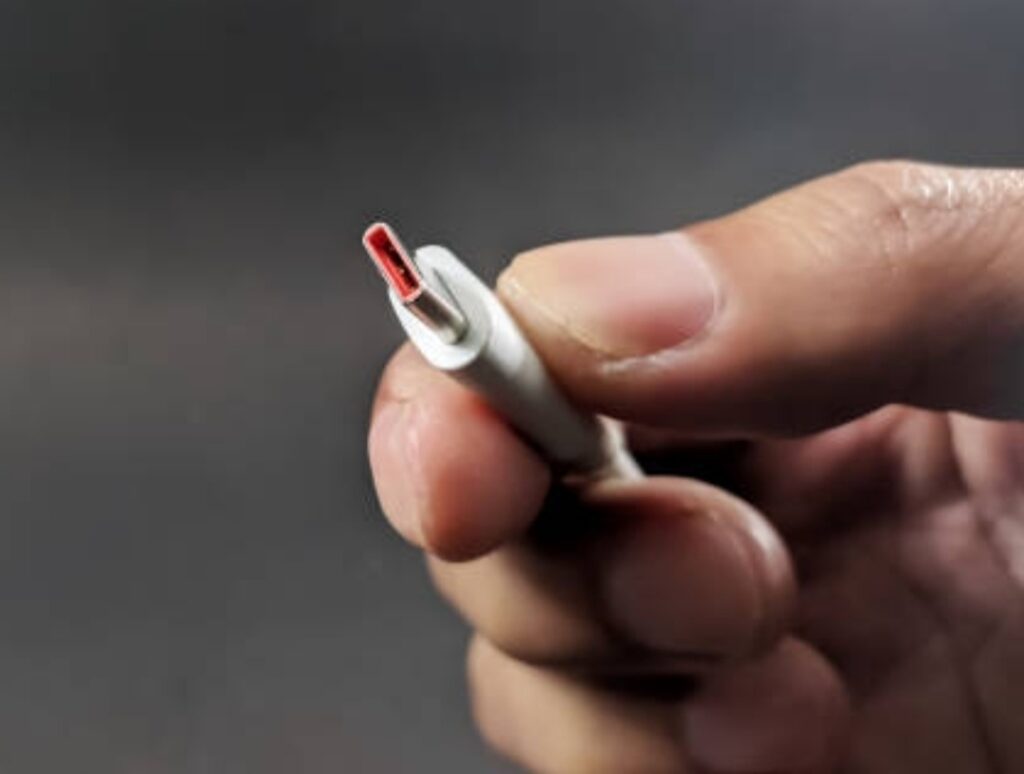
USB-C vs. USB-A and USB-B – How Does USB-C Compare to Previous USB Standards?
Before USB-C became the industry standard, previous generations of USB connectors—USB-A and USB-B—were widely used in computers, smartphones, and external devices.
But how does USB-C compare to USB-A and USB-B? Let’s examine the major differences and why USB-C is the superior choice.
1. Shape & Design – USB-C is Reversible
One of the most immediate advantages of USB-C is its reversible design.
✅ USB-C: Compact, oval-shaped, and fully reversible—you can plug it in any direction, eliminating frustration.
❌ USB-A & USB-B: Require a specific orientation, leading to trial and error when plugging in devices.
This makes USB-C more user-friendly compared to older, bulkier connectors.
2. Speed & Performance – USB-C Delivers Faster Data Transfer
The biggest technological upgrade with USB-C is data transfer speed.
⚡ USB-C (USB 3.2, USB4): Supports speeds up to 40Gbps (when using USB4 or Thunderbolt).
⚡ USB-A (USB 3.0): Limited to 5Gbps or 10Gbps, depending on the version.
⚡ USB-B: Typically supports speeds under 5Gbps, making it slower for file transfers.
This means that USB-C is significantly faster, making it ideal for high-speed external drives, gaming peripherals, and video streaming.
3. Power Delivery – USB-C Enables Faster Charging
USB-C supports Power Delivery (PD), allowing for higher wattage charging.
🔋 USB-C (Power Delivery): Supports up to 100W-240W charging—enough to power laptops, gaming consoles, and even some desktop PCs.
🔋 USB-A: Typically limited to 5W-15W, making it much slower for charging smartphones and tablets.
🔋 USB-B: Used mainly for printers and external devices, offering low power output.
With USB-C fast charging, devices like the MacBook Pro, Dell XPS, and Samsung Galaxy phones can charge much faster compared to USB-A.
4. Universal Compatibility – USB-C is the Future-Proof Standard
Unlike USB-A and USB-B, which require different connectors for different devices, USB-C is a one-size-fits-all solution.
🖥️ Laptops, smartphones, tablets, gaming consoles, and even monitors now use USB-C for charging, data, and video output.
🎧 Audio accessories like headphones, speakers, and DACs are increasingly using USB-C instead of 3.5mm audio jacks.
📺 Display connectivity allows USB-C to support HDMI, DisplayPort, and even Thunderbolt connections.
The versatility of USB-C makes it a true universal standard.
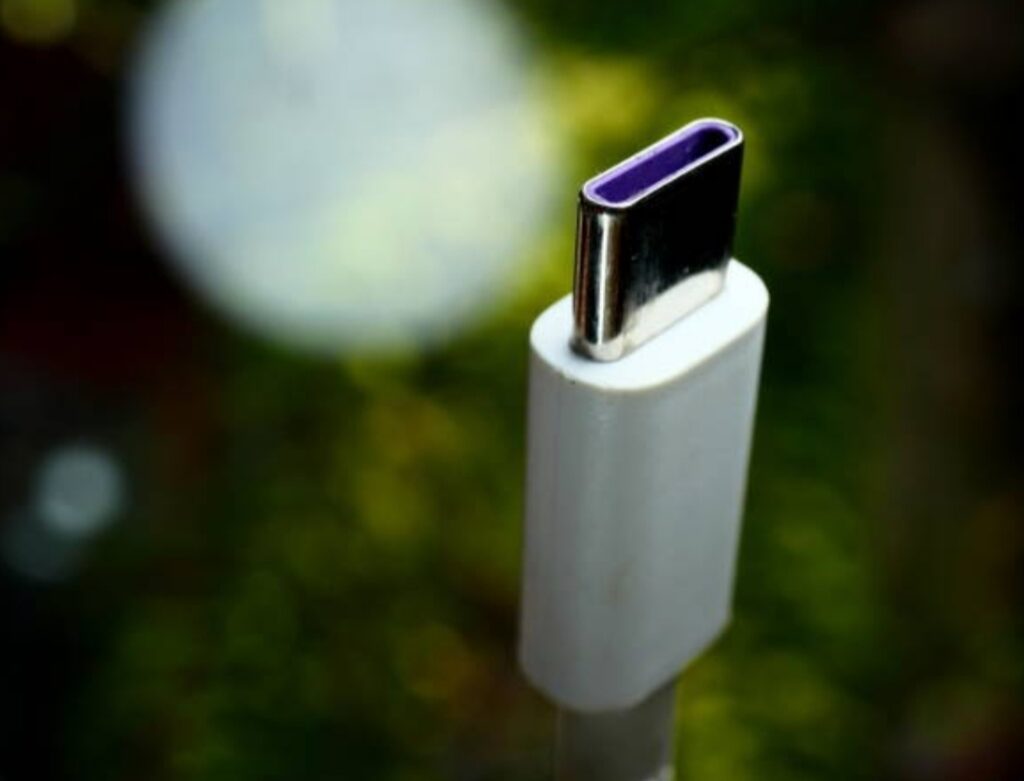
Thunderbolt 3 and 4 Compatibility – How USB-C Enhances Performance
Many modern USB-C ports support Thunderbolt technology, but not all USB-C ports are Thunderbolt-compatible.
So, what’s the difference between USB-C and Thunderbolt 3/4?
1. Thunderbolt 3 vs. Thunderbolt 4 – What’s the Difference?
Both Thunderbolt 3 and Thunderbolt 4 use USB-C connectors, but offer higher speeds and advanced features.
🚀 Thunderbolt 3:
✔ Supports up to 40Gbps data transfer speeds—4x faster than USB 3.2.
✔ Can connect dual 4K displays or a single 5K display.
✔ Provides up to 100W power delivery, making it perfect for high-performance laptops.
✔ Found in MacBooks, high-end Windows laptops, and professional workstations.
🚀 Thunderbolt 4:
✔ Same 40Gbps speed but with better consistency and minimum performance requirements.
✔ Supports dual 4K displays or a single 8K display.
✔ Universal cable certification ensures all Thunderbolt 4 cables work across devices.
✔ More secure and stable than Thunderbolt 3.
Thunderbolt significantly enhances USB-C performance, making it a must-have feature for high-end users.
2. Thunderbolt’s Impact on High-Performance Devices
Thunderbolt 3 and 4 are designed for power users who need high-speed data transfer and seamless connectivity.
💻 Laptops & Ultrabooks:
✔ Thunderbolt enables super-fast external SSD speeds, reducing file transfer time.
✔ Allows laptops to connect to high-resolution external monitors and docking stations.
🎮 Gaming & eGPUs:
✔ Gamers can use Thunderbolt to connect an external GPU (eGPU) for better graphics performance on laptops.
✔ Helps run AAA games and intensive creative software like Adobe Premiere Pro.
📺 Creative Professionals (Video Editors, Photographers, Designers):
✔ Thunderbolt supports 8K video editing, high-resolution displays, and professional workstations.
✔ Works seamlessly with external hard drives, RAID storage, and 4K monitors.
If you need maximum speed and performance, choosing a USB-C port with Thunderbolt 4 support is the best option.
Why USB-C is the Future of Connectivity
🔹 USB-C outperforms USB-A and USB-B in every aspect, from faster charging to high-speed data transfer.
🔹 Thunderbolt 3 and 4 enhance USB-C even further, making it the best choice for high-performance devices.
🔹 The shift towards USB-C is happening now—most new laptops, smartphones, and accessories use USB-C as the universal standard.
💡 If you’re upgrading your devices, make sure they support USB-C and Thunderbolt to maximize performance!
👉 Ready to upgrade? Check out the best USB-C accessories and Thunderbolt-enabled devices today!
Tips for Consumers – Making the Most of USB-C
USB-C has become the standard for modern connectivity, offering faster charging, high-speed data transfer, and versatile compatibility across multiple devices.
But not all USB-C cables and accessories are created equal.
To fully benefit from USB-C’s powerful features, consumers need to choose quality cables and understand how to optimize their devices.
This guide will help you select the right USB-C cables and maximize USB-C features for the best experience.
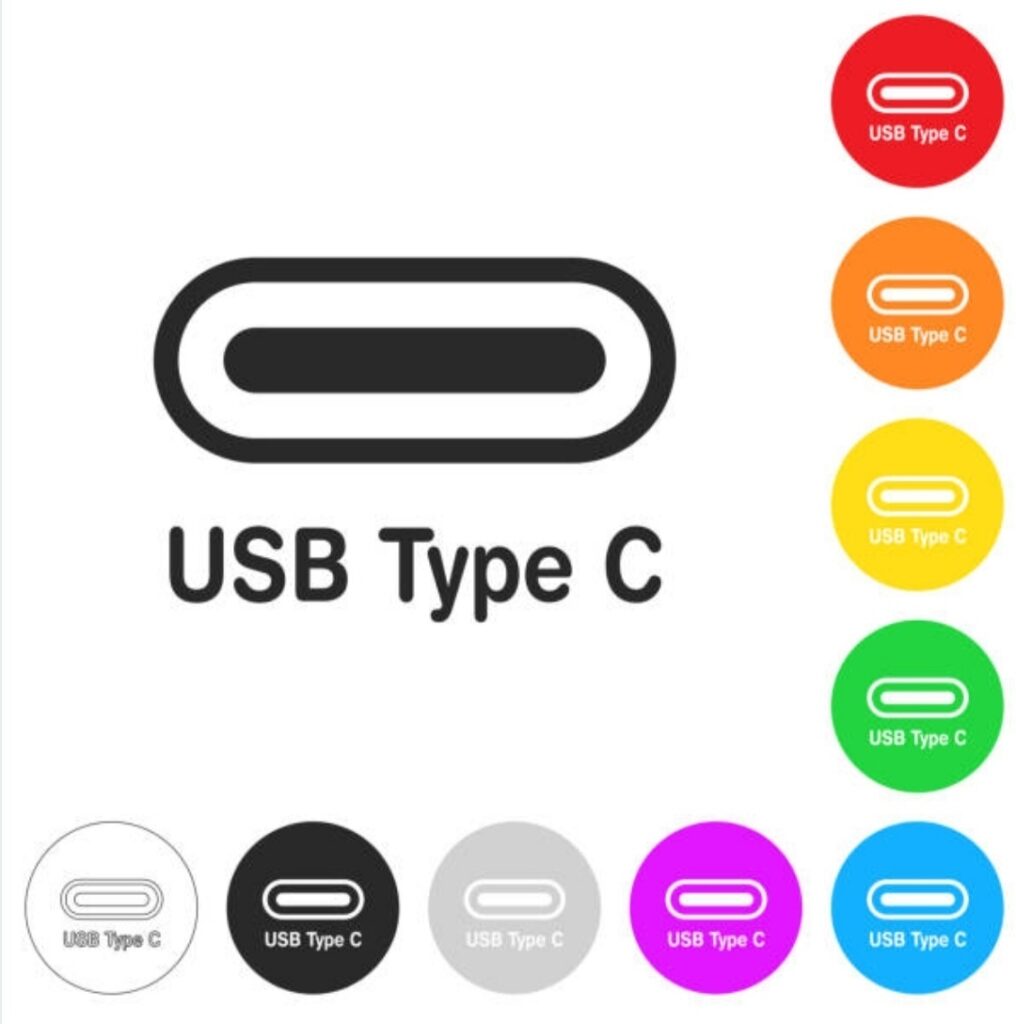
Selecting Quality USB-C Cables – How to Choose the Best and Safest USB-C Cables
Not all USB-C cables are safe to use.
Some cheap, uncertified cables can damage your devices, cause slow charging, or even become a fire hazard.
Here’s how to identify a high-quality USB-C cable and avoid potential risks.
1. Check for USB-IF Certification
The USB Implementers Forum (USB-IF) is the official body that certifies USB-C cables for safety and performance.
🔍 Look for the “Certified USB” logo on the cable or packaging.
💡 Certified cables meet strict safety standards, ensuring proper power delivery and data transfer speeds.
⚠ Avoid non-certified cables, as they may have poor wiring, incorrect resistors, or low-quality materials.
To be 100% safe, choose cables that are officially listed on the USB-IF website.
2. Verify Power Delivery (PD) Support for Fast Charging
Not all USB-C cables support fast charging.
If you want quick charging for your smartphone, tablet, or laptop, make sure the cable supports USB-C Power Delivery (PD).
⚡ USB-C PD cables can deliver up to 240W, making them ideal for high-powered laptops like MacBook Pro, Dell XPS, and gaming laptops.
⚠ Standard USB-C cables without PD support may only charge at 5W-15W, which is too slow for many modern devices.
💡 Check the wattage rating on the cable before purchasing.
3. Choose the Right USB-C Version for Faster Data Transfer
USB-C cables come in different versions, each with its own maximum data transfer speed.
Here’s a quick comparison:
✅ USB 2.0 USB-C Cable – 480 Mbps (suitable for charging, not data transfer)
✅ USB 3.2 Gen 1 USB-C Cable – 5 Gbps (good for external hard drives and standard file transfers)
✅ USB 3.2 Gen 2 USB-C Cable – 10 Gbps (ideal for high-speed data transfer and 4K video output)
✅ USB4 USB-C Cable – 40 Gbps (best for Thunderbolt 4 devices and professional use)
💡 If you transfer large files frequently, invest in a USB 3.2 Gen 2 or USB4 cable for maximum speed.
4. Avoid Cheap, Unbranded Cables
Many low-cost USB-C cables from unknown brands lack proper safety measures.
🚨 Risks of cheap USB-C cables:
❌ Can overheat and damage your phone or laptop battery
❌ May deliver unstable power, causing slow charging
❌ Might not support fast data transfer speeds
💡 Stick to reputable brands like Anker, Belkin, UGREEN, Cable Matters, and Apple-certified cables.
👉 Need a reliable USB-C cable? Check out the best USB-C cables here!
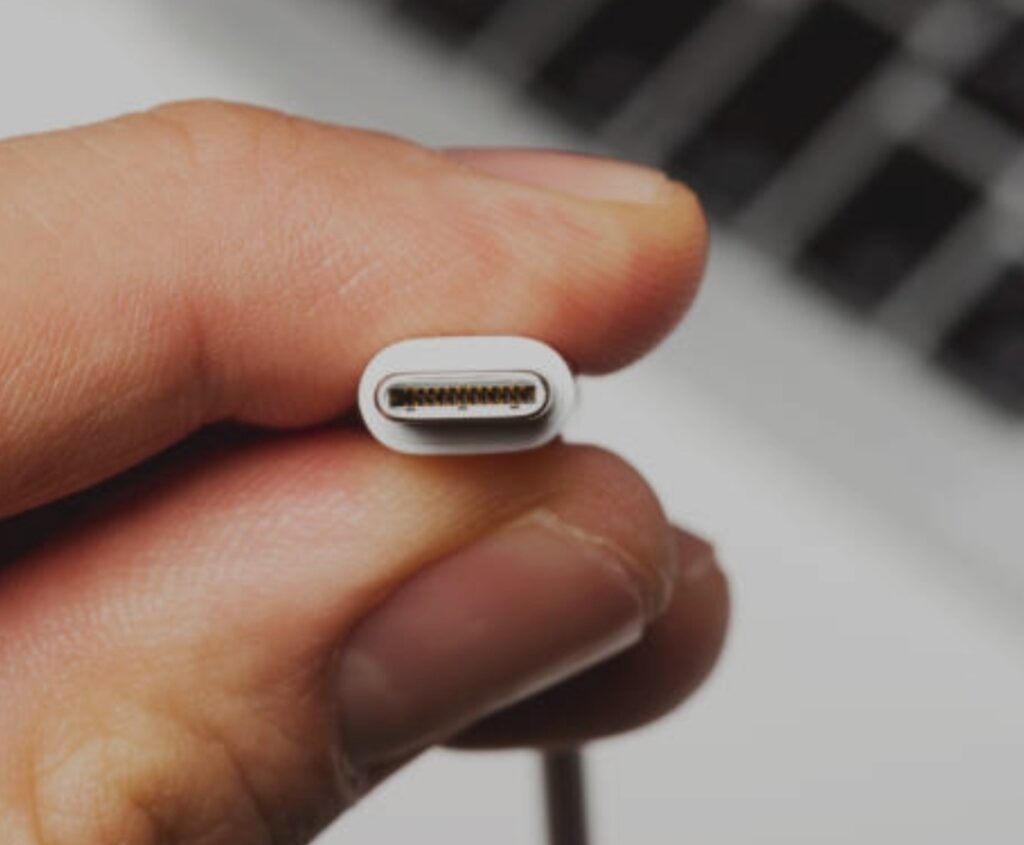
Maximizing USB-C Features – How to Get the Most Out of Your USB-C Devices
USB-C is more than just charging and data transfer.
If used correctly, it can replace multiple cables and ports, making your setup simpler and more efficient.
Here’s how to unlock the full potential of USB-C.
1. Use USB-C for Fast Charging – Speed Up Your Charging Time
USB-C supports fast charging, but only if you have the right charger and cable.
⚡ USB-C Power Delivery (PD) allows devices to charge up to 70% faster compared to standard USB-A.
⚡ Laptops like the MacBook Pro, Dell XPS, and Lenovo ThinkPad can charge via USB-C instead of bulky power bricks.
⚡ Many smartphones (iPhone 15, Samsung Galaxy, Google Pixel) now use USB-C for high-speed charging.
💡 Tip: To get the fastest charging speed, use a USB-C PD charger with the correct wattage (e.g., 20W for phones, 65W+ for laptops).
👉 Looking for the best USB-C fast charger? Check out the top-rated USB-C chargers!
2. Connect External Displays with USB-C – Use USB-C for Video Output
Did you know USB-C can replace HDMI and DisplayPort?
Many modern laptops, tablets, and smartphones support USB-C video output, allowing you to connect to external monitors and TVs.
📺 USB-C to HDMI: Connect your laptop to a 4K TV or monitor.
📺 USB-C to DisplayPort: Great for high-refresh-rate gaming monitors.
📺 USB-C to USB-C (Thunderbolt 3/4): Best for MacBooks and high-end monitors.
💡 Tip: Make sure your device supports DisplayPort Alt Mode if you want to use USB-C for video output.
👉 Need a USB-C monitor adapter? Find the best USB-C to HDMI cables here!
3. Use USB-C Docking Stations for a Clean, Clutter-Free Setup
If you have multiple devices, a USB-C docking station can eliminate cable clutter.
🔌 Benefits of a USB-C Docking Station:
✔ Connect multiple monitors, external hard drives, keyboards, and more with a single USB-C port.
✔ Charge your laptop and phone at the same time.
✔ Get high-speed internet with an Ethernet port.
💡 Tip: Choose a docking station with Power Delivery (PD) support to keep your laptop charged.
👉 Upgrade your workspace with the best USB-C docking stations!
Unlock the Full Potential of USB-C
USB-C is more than just a charging port—it’s a powerful, versatile standard that can enhance your devices in many ways.
💡 Key Takeaways:
✔ Choose certified USB-C cables to avoid damage and ensure fast charging.
✔ Use USB-C for video output to connect 4K monitors and external displays.
✔ Invest in a USB-C docking station for a clutter-free, efficient workspace.
✔ Check USB-C Power Delivery (PD) support for maximum charging speed.
👉 Upgrade your setup today! Find the best USB-C accessories and take full advantage of USB-C technology!
Conclusion – Why USB-C Is the Future of Connectivity
The rise of USB-C marks a turning point in how we charge, transfer data, and connect devices.
With its universal compatibility, faster speeds, and enhanced versatility, USB-C is set to become the global standard for connectivity across smartphones, laptops, tablets, and even gaming consoles.
If you’re still using older USB standards, now is the perfect time to upgrade to USB-C and experience the difference.
Let’s take a final look at why USB-C is the best choice for modern technology users.
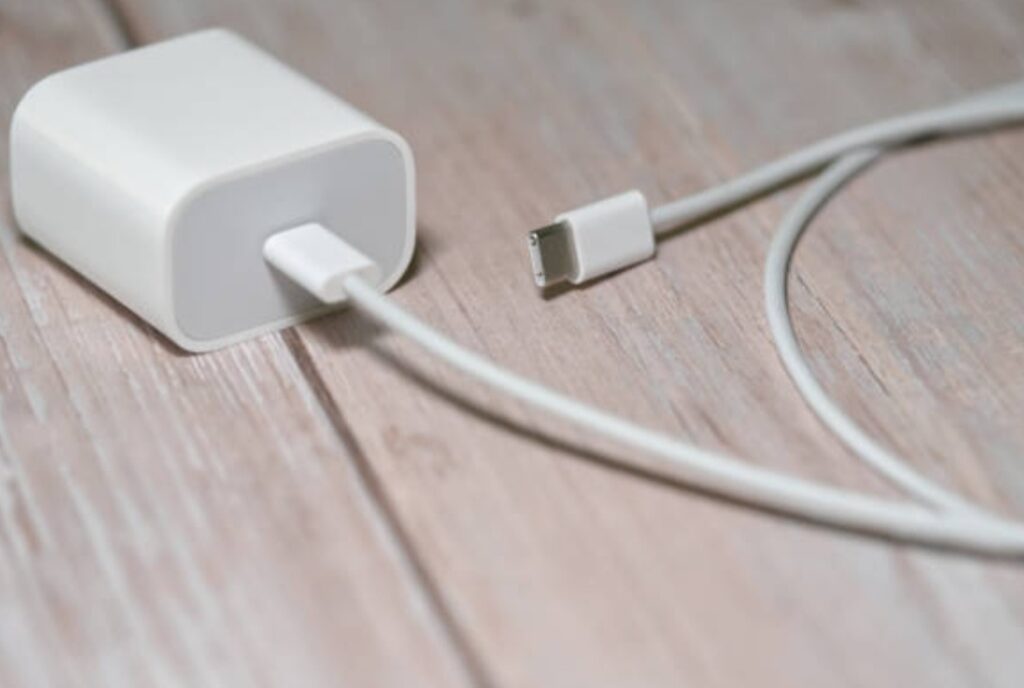
Recap of USB-C Benefits – Why USB-C Is the Best Standard
From faster charging to seamless connectivity, USB-C offers a range of advantages over USB-A and USB-B.
Here’s why USB-C is the superior choice for modern devices:
✅ Universal Compatibility – USB-C works across smartphones, tablets, laptops, gaming consoles, and even some TVs.
✅ Reversible Connector – Unlike USB-A and USB-B, USB-C can be plugged in either way, eliminating frustration.
✅ Faster Charging with USB Power Delivery (PD) – USB-C can charge smartphones up to 70% faster and power high-wattage devices like MacBooks and gaming laptops.
✅ High-Speed Data Transfer – With USB 3.2 and USB4, USB-C supports data speeds up to 40 Gbps, perfect for transferring large files.
✅ Supports Video Output – USB-C can replace HDMI and DisplayPort, allowing for 4K and even 8K video output with the right cable.
✅ Works with Thunderbolt 3 & 4 – Many USB-C ports support Thunderbolt for ultra-fast data speeds and professional-grade performance.
✅ Future-Proof Technology – With more companies adopting USB-C, it’s clear this standard will dominate the industry for years to come.
💡 The shift to USB-C is not just a trend—it’s the next big evolution in tech.
Final Thoughts on the Transition to USB-C – Why You Should Upgrade Now
Many tech giants have already embraced USB-C, signaling the end of old, outdated USB standards.
📌 Apple has fully transitioned to USB-C, even on the iPhone 15.
📌 Laptops from Dell, HP, Lenovo, and MacBook now rely solely on USB-C for charging and connectivity.
📌 Gaming consoles like the Nintendo Switch and PlayStation 5 controllers use USB-C.
If you’re still using older USB-A and Micro-USB cables, now is the time to make the switch.
🔹 USB-C docking stations can eliminate clutter and simplify your setup.
🔹 USB-C fast chargers provide quicker, more efficient charging.
🔹 USB-C hubs allow you to connect multiple devices seamlessly.
👉 Upgrade to USB-C today and future-proof your tech setup! Check out the best USB-C accessories here!
Final Call to Action – Make the Smart Move to USB-C Today!
💡 Still wondering, “What is USB-C, and why should I upgrade?”
The answer is simple: USB-C is the most powerful, efficient, and future-proof connectivity standard available today.
Don’t wait until your devices become outdated.
Take action now and upgrade to USB-C for a faster, more convenient experience!
👉 Find the best USB-C cables, chargers, and accessories here and embrace the future of connectivity!
You might also like :

